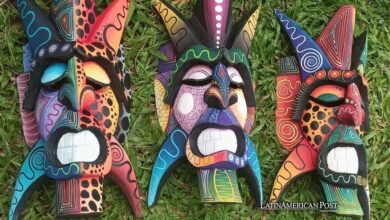Costa Rica Permaculture Revolution Turns Waste into Water and Wealth

In Costa Rica’s Monteverde hills, a 17-hectare reserve is turning sun, rain, wind, and soil into partners instead of obstacles. Through permaculture, residents are proving that scarcity can be reshaped into design—and that resilience begins with listening to the land.
Designing With, Not Against, Nature
Ask permaculture guide Cris Rojas what the movement means, and she starts with relationships, not tools. “It’s a landscape and ecological design method born of culture,” she told EFE, “where we work with natural resources, not against them.”
In practice, it means radical attention to place: watching where the sun strikes a slope in July, where wind funnels through a ravine, how clay holds water in the wet season, and cracks in the dry. From those observations, orchards, beds, paths, and cisterns are planned. “If I have a lot of sun in a zone and I know how it behaves on the ground, I can use that energy to produce food,” Rojas explained. “It’s a great solution for a productive landscape.”
The philosophy echoes Australian cofounder David Holmgren’s framework: twelve principles that include observe and interact, catch and store energy, obtain a yield, avoid waste, favor small and slow solutions, and respond creatively to change. In Monteverde, those words aren’t pinned on a classroom wall—they’re laid into the soil you walk on.
A Living Lab in Monteverde
At the Valle Escondido Nature Reserve, hospitality is the invitation and education is the pulse. Visitors walk winding trails past compact greenhouses built from repurposed truck tires, where lettuces and herbs thrive in a mountain breeze. “We use rainwater collected from buildings by gravity to help fertilize plants that grow in the area,” Rojas told EFE. Gutters feed cisterns; cisterns feed drip lines; drip lines feed roots. The cycle is literal.
Greywater is given a second life, filtered and directed to irrigate aromatic gardens. “It allows us to save an incredible amount of water and resources,” Rojas said. In a country where the dry season stretches and climate extremes sharpen, this is more than thrift—it is resilience.
The farm-to-table link is kept short. “We are free of pesticides, herbicides, and fungicides, and we offer it in our organic restaurant,” Rojas noted. Guests taste tomatoes and greens that never saw a truck or warehouse. Each bite carries a decision: short supply chains, clean soil, closed loops.
Closed Loops, Open Minds
Permaculture thrives on loops—the art of turning one problem into another’s solution. Valle Escondido uses black soldier fly larvae to digest organic waste, especially chicken manure. What could rot in a landfill becomes nutrient-rich compost within days, feeding garden beds that feed the restaurant that feeds the guests. Waste becomes sustenance, and the cycle closes again.
Small-and-slow solutions, another of Holmgren’s principles, guide every corner. “Jonah Tubes,” built from recycled materials, are as much a classroom as a food source. Beds are aligned with pollinator habitats, paths follow contours rather than carve across them, and shade trees shelter both beans and birds. Even mistakes are teachers—showing how much to mulch, how far water travels, when to let the soil rest.
Costa Rica is uniquely primed for this experiment. Decades of environmental policy have left cultural muscle for conservation, and Monteverde’s natural wealth offers fertile ground. Rojas sees permaculture not just as a local novelty but as a national strategy, one that allows rural communities to earn livelihoods without degrading their landscapes. “It’s a way to braid the two together,” she said.
From Farm Method to Everyday Ethic
For Rojas, permaculture is not confined to garden beds. “We have to broaden the concept,” she told EFE. “Don’t see it only as a design method, but as a lifestyle… caring for the earth, caring for people, buying organic, reducing the waste we make—small steps.”
That ethic asks city dwellers to think like gardeners and gardeners to think like hydrologists. It asks chefs to be agronomists and hoteliers to be composters. It invites visitors to notice their mornings as landscapes: what needs more shade, what needs more light, how to store the daylight they have been given.
A cup of coffee in Valle Escondido—a bean grown without chemicals, watered with rain, mulched with yesterday’s kitchen peelings—becomes more than breakfast. It becomes a blueprint for how ordinary choices carry ecological weight.
The revolution here is quiet: a valve hissing open, a barrel filling, a seedling taking root. But the stakes are loud. Every liter of rain captured is one not pumped with electricity; every kilogram of waste composted is one less heating the sky; every visitor who leaves with new habits is another node in a spreading network.
Costa Rica did not invent working with nature, but it has a gift for turning good ideas into institutions and landscapes. In Monteverde’s Valle Escondido, the philosophy becomes tangible: permaculture is a meal, a path, a practice you can take home.
Also Read: Paraguay’s Investment Grade Boom Faces a Street-Level Reality Check
And as hotter summers and longer droughts test the region, that ethic—to work with, not against—may be the most crucial export Costa Rica can offer.





